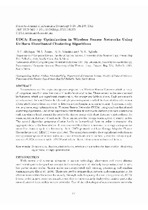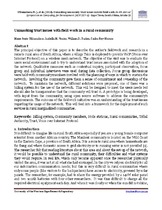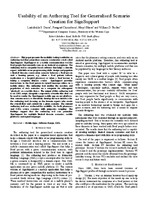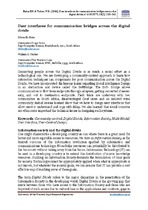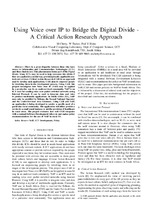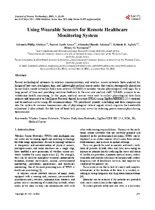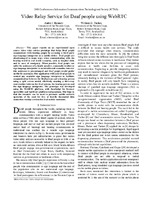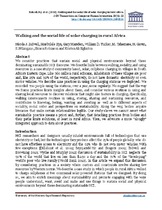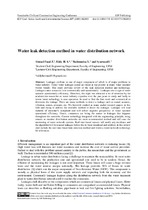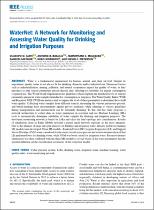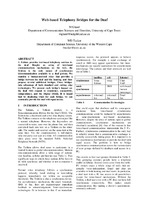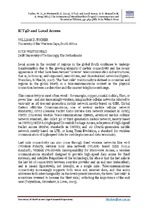Browsing Computer Science by Title
Now showing items 160-171 of 171
-
UDCA: Energy optimization in wireless sensor networks using uniform distributed clustering algorithms
(Academic Journals Inc., 2011)Transceivers are the major energy consumption in a Wireless Sensor Network which is made of low-power, small in size, low cost and multi-functional nodes. These sensor nodes are operated by batteries which put significant ... -
Unmasking community trust issues in rural field work
(ACM, 2013)The principal objective of this paper is to describe the au thor's fieldwork and research in a remote rural area of South Africa, where a Village Telco is deployed to provide Voice over Internet Protocol on a wireless mesh ... -
Usability of an authoring tool for generalised scenario creation for signsupport
(Telkom, 2015)This paper presents the usability testing results for an authoring tool that generalises scenario creation for a tool called SignSupport. SignSupport is a mobile communication tool for Deaf people that currently runs ... -
User interfaces for communication bridges across the digital divide
(Springer-Verlag, 2006)Connecting people across the Digital Divide is as much a social effort as a technological one. We are developing a community-centred approach to learn how interaction techniques can compensate for poor communication across ... -
Using voice over IP to bridge the digital divide: a critical action research approach
(Telkom, 2003)There is a great disparity between those who have access to Information and Communication Technologies (ICTs) and those that do not. This phenomenon forms part of the Digital Divide. Many ICTs may be used to help overcome ... -
Using wearable sensors for remote healthcare monitoring system
(Scientific Research Publishing, 2011)Recent technological advances in wireless communications and wireless sensor networks have enabled the design of low-cost, intelligent, tiny, and lightweight medical sensor nodes that can be strategically placed on human ... -
Video Relay Service for Deaf people using WebRTC
(University of the Western Cape, 2019-03)This paper reports on an experimental open source video relay service prototype that helps Deaf people communicate with hearing people by accessing a third party sign language interpreter on a mobile device. Deaf people ... -
Walking and the social life of solar charging in rural Africa
(Association for Computing Machinery, 2013)We consider practices that sustain social and physical environments beyond those dominating sustainable HCI discourse. We describe links between walking, sociality, and using resources in a case study of community-based, ... -
Water distribution network leak detection management
(Curran Associates Inc., 2020)Water is becoming an increasingly scarce commodity and must be effectively managed to ensure minimal losses. Water is a basic human resource and during both a physical and a cyber war, limiting, or interrupting the supply ... -
Waternet: A network for monitoring and assessing water quality for drinking and irrigation purposes
(IEEE, 2022)Water is a fundamental requirement for human, animal, and plant survival. Despite its importance, quality water is not always fit for drinking, domestic and/or industrial use. Numerous factors such as industrialization, ... -
Web-based telephony bridges for the deaf
(Telkom, 2001)A Teldem provides text-based telephony services to the deaf. Despite an array of text-based communications mechanisms on the web, the Teldem is the only means of synchronous telecommunication available to a deaf person. ... -
Untitled
(John Wiley & Sons, 2015)Local access in the context of regions in the global South continues to undergo transformation due to the growing ubiquity of mobile connectivity and the recent appearance of what have been termed “inverse” telecommunication ...

